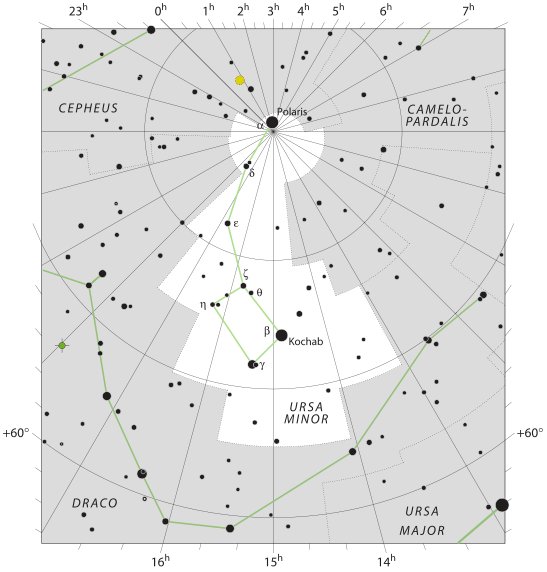1. The star at the pole, Polaris, is the name of the star close to the northern end of the pole which can be imagined to run all through the earth. The constellation Ursa Minor stretches mostly around 16h, but Polaris is at the other side of the pole:
The long and winding Draco (Dragon) constellation, at present drawn from ca 10h to ca 20h, can be imagined as a kind of flying serpent and this area around the pole could be his 'couch': ... The girls were bidden to grind out salt on the mill. At midnight they asked for further instructions. 'Keep grinding', he told them. Then they ground with such vigor that the ship sank. Water poured into the eye of the mill, creating the maelstroem of the sea. Therefore the sea was salt. Incidentally, the mill was given a kenning, Serpent's Couch ... Ursa Minor is 'embraced' by Draco, but Polaris is outside:
The group of stars around vaha mea in Gb7-25 (where 72 * 5 = 360) has now grown to 5 (as in 'fire'). Although anciently the 'fire' was (according to Hamlet's Mill) defined as a straight line from the northern to the southern pole ... It should be stated right now that 'fire' is actually a great circle reaching from the North Pole of the celestial sphere to its South Pole ... it obviously would suit perfectly well for this glyph and to the line which can be drawn from Polaris southwards to Baten Kaitos (the 'belly of the whale'). 89º 02' N - 10º 35' S = 99º 37' or ca 100º, leaving 260º for the rest of the great circle. In the Tahitian star pillar list Polaris (Ana-nia, the pillar-to-fish-by) was the 10th and last such 'pillar', which proves how important the star was - it was known to be there at the very top of the sky roof even if it was beyond sight. And they could keep track of it by way of Baten Kaitos - the pillar-to-fish-by was always 100º north of the belly of the whale. |
|||||||||||||||||||||||||||||||||||||||||||||||||||||||||||||||||||||||||||||||||||||||||||||||||||||||||||||||||||||||||||||||||||||||||||||||||||||||||||||||||||||||||||||||||||||||||||||||||||||||||||||||||||










